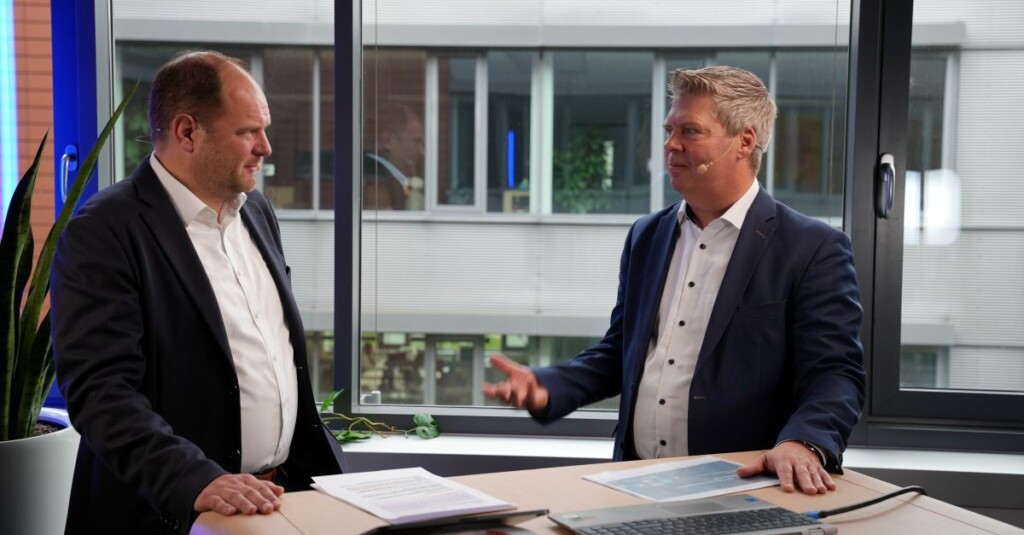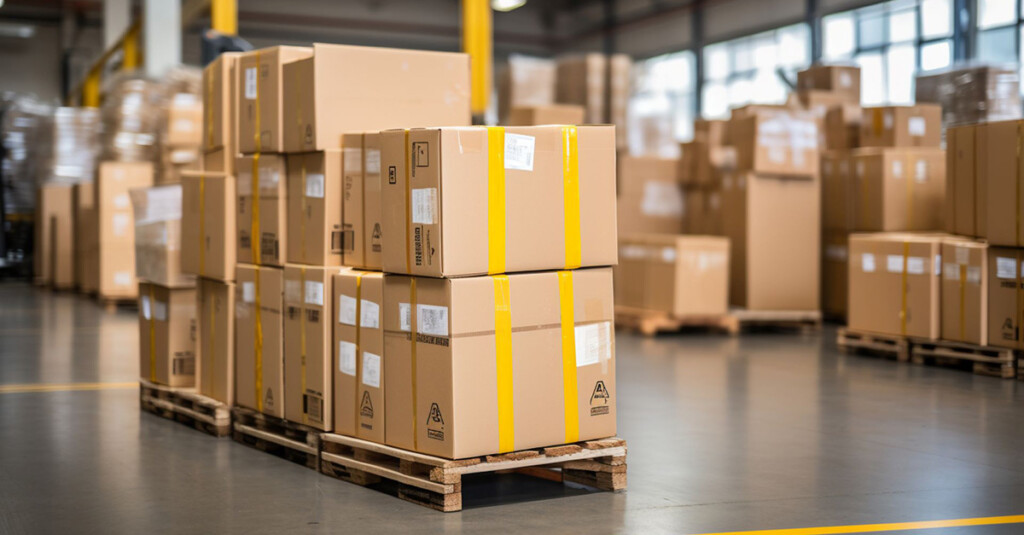Skip to content
In our recent webinar, "How Bosch Rexroth runs modern Demand Capacity Management (DCM) in 2025," key experts from Bosch Rexroth provided comprehensive insights into managing today's increasingly complex and volatile supply chains. Here are the extensive highlights from the session, which offer valuable lessons and practical strategies for other manufacturing companies:1. Comprehensive Integration of Digital PlatformsBosch Rexroth emphasized the importance of fully integrating digital platforms across their entire operational ecosystem. By employing these integrated systems, Rexroth has achieved seamless real-time collaboration with global suppliers, thus gaining complete visibility and control over their supply chain. This integrated approach addresses critical challenges such as data fragmentation, inconsistent supplier communication, and slow decision-making, enabling manufacturers to swiftly adapt to changing market demands and conditions.2. Transparency and Analytics for Enhanced Decision MakingBosch Rexroth demonstrated their sophisticated use of transparency and predictive analytics powered by SupplyOn’s advanced tools. Predictive analytics enables fast demand simulation, proactive capacity management, and the ability to swiftly respond to potential disruptions. Other manufacturing companies facing uncertainties such as demand volatility and unexpected supply chain interruptions can leverage predictive analytics to anticipate changes, optimize resource allocation, and strengthen overall supply chain resilience.3. Agile Supply Chain ProcessesA significant challenge highlighted by Bosch Rexroth was the difficulty in maintaining responsiveness amid unpredictable demand changes and supply disruptions. To address this, they have developed highly agile supply chain processes underpinned by robust and continuous supplier collaboration. By emphasizing flexibility, Bosch Rexroth has successfully managed unexpected fluctuations, avoiding inventory shortages and excesses, thus ensuring customer satisfaction and operational efficiency. Manufacturers can adopt similar agile methodologies to enhance responsiveness and flexibility in their supply chains.4. Real-Time Supplier Collaboration with Capacity TrackerBosch Rexroth specifically detailed their strategic use of SupplyOn’s Capacity Tracker, a crucial tool for achieving real-time supplier collaboration and capacity monitoring. This innovative tool allows Rexroth to identify potential bottlenecks early, proactively manage supplier performance, and significantly reduce lead times. Other companies can implement similar real-time tracking solutions to improve supplier responsiveness, minimize disruptions, and achieve more reliable forecasting.5. Automation and Process OptimizationBosch Rexroth extensively highlighted the importance of automation in overcoming labor-intensive, error-prone manual processes. By automating routine operations, Rexroth has significantly improved operational efficiency, reduced human error, and enhanced overall process accuracy. Automation frees their teams to focus on strategic initiatives, driving innovation and long-term improvements. Manufacturers should view automation not merely as a method for cutting costs but as a strategic enhancement for operational effectiveness and competitive advantage.Additional Challenges AddressedDuring the webinar, Bosch Rexroth also discussed several additional challenges faced in modern supply chain management:Data Complexity and Integration: Managing disparate data sources and integrating them effectively was identified as a common struggle. Rexroth’s digital integration strategy demonstrates the importance of centralized data management.Supply Chain Visibility: Gaining complete visibility throughout the supply chain is essential but often difficult due to fragmented systems and disconnected suppliers. Bosch Rexroth's implementation of real-time tracking and analytics provides a clear example for other manufacturers.Resource Allocation: Efficient resource allocation in response to fluctuating market conditions requires sophisticated analytics and predictive capabilities, which Rexroth successfully addresses through advanced analytics.What Other Manufacturing Companies Can LearnManufacturing companies aiming for excellence in supply chain management can significantly benefit from adopting Bosch Rexroth’s comprehensive and proactive strategies. Integrating digital platforms, employing predictive analytics, fostering agility, enhancing real-time supplier collaboration, proactively managing international trade risks, and leveraging automation collectively lead to tangible outcomes. These include improved forecast accuracy, reduced lead times, increased operational efficiency, and measurable return on investment.

Just recently, I attended the S&OP Summit in Amsterdam – the leading conference on Sales and Operations Planning (S&OP). My aim was to find out about the new possibilities and developments in S&OP and IBP so that I could show SupplyOn customers the added value of integrating planning and execution. Strategic planning has always been at the heart of a successful company. Processes such as S&OP and IBP (Integrated Business Planning) provide a structured framework for this. But despite decades of further development, many companies are still struggling with the same challenges: data silos, a lack of proof of added value and internal resistance. It is particularly striking how little consideration has been given to integrating external data sources into these processes.The importance of S&OP and IBP for companiesS&OP and IBP help to align a company's strategic, operational and financial plans. They are designed to create transparency, make data-based decisions and increase agility in the market. Companies that successfully implement these processes benefit from:More efficient operations through coordination between departmentsBetter forecasts through a unified view of supply and demandHigher resilience to market changes and risksBut the key to truly integrated planning lies not only in internal collaboration, but also in the ability to take external influences into account at an early stage.External data: the missing piece of the puzzleIn an interconnected world, external factors such as market trends, supply chain disruptions, geopolitical events and weather conditions have a significant impact on corporate planning. Companies that integrate external data sources into their S&OP and IBP processes have a clear competitive advantage:Better demand forecasting: Data from suppliers, customers and third-party providers help to predict demand more accuratelyProactive risk management: early warning systems based on external data sources can identify disruptions in the supply chain more quicklyOptimization of the supply chain: real-time data on traffic, inventory levels and production capacities enable more efficient resource allocationData quality as a basic requirementA crucial factor for success is the quality of the data. Companies must ensure that their internal and external data sources:Consistent and alignedReal-time capable or at least available in real timeTransparent and comprehensibleThis requires not only technological investments, but also organizational changes. Teams need to be trained, processes adapted and a data-driven corporate culture fostered.The path to integrated planning of the futureTo realize the full potential of S&OP and IBP, companies should follow these steps:Break down data silos: A central platform for integrating internal and external data is essential.Demonstrate added value: The benefits of integrated planning solutions must be clearly communicated to overcome internal resistance.Prioritize external data: Partnerships with third-party providers, integration of suppliers, e.g. via SupplyOn, and technologies such as AI and machine learning can help to use external data more effectively.Continuous improvement: S&OP and IBP are not static processes. They must be regularly reviewed and adapted to new market conditions.ConclusionThe future of successful S&OP and IBP projects lies in the integration of external data sources, such as those provided by SupplyOn for capacity or risk management. By taking this step early on, companies not only create the basis for better decisions, but also strengthen their competitiveness in an increasingly complex and dynamic world. It is time to fully exploit the potential of data – for truly integrated planning and sustainable success!

Packing goods for shipping poses greater challenges for suppliers than might be assumed at first glance. In terms of processes and systems, this step is usually linked to delivery, but this is only the case in reality in a few cases. Many companies pack directly after the manufacturing process or quality control and then store the customer-specific packaged containers until dispatch.SupplyOn has developed the "Pack-to-Stock" module to ensure an end-to-end digital process - and thus support all parties involved in their digitalization strategy. The module decouples the packaging process from the creation of the Advanced Shipping Notification (ASN). Users can pack and label the goods directly after production and later assign the pre-packed materials to an outbound delivery without any additional manual input.Digital twin with all relevant informationThe core of Pack-to-Stock is the ability to all important product-relevant information such as production, expiry and use-by date, batch number, software or hardware revision, etc. before production. Packaging orders can be created with reference to a material number, an order or a delivery call-off. The system supports the transmission of packaging instructions, which are automatically saved in the system. Pack-to-Stock calculates the number of single packs and handling units required based on the planned production quantity and allows the required single pack and HU warehouse labels to be printed directly. It thus forms a digital twin with all relevant information on the goods stored in the warehouse.The module also offers all the important functions for adapting the digital twin to the produced and packaged containers. This means that the fill quantity of individual containers and the structure of the packs can be efficiently adapted to reality at any time. Production faults and quality control results can also be easily mapped in the system.Easy assignment of a deliveryPicking and delivery planning can be carried out as before in merchandise management and the warehouse management system. The creation of the delivery in Supply Chain Collaboration (SCC) also takes place unchanged on the basis of the previous documents (purchase orders or delivery call-offs). What is new is that pre-packed material can be easily assigned to the outbound delivery by scanning the package or handling unit ID. With the assignment, all part-specific information is also automatically transferred to the delivery.The system also supports all forms of mixed scenarios, such as the delivery of pre-packed and non-packed materials and the manual creation of additional handling units. The assignment of pre-packed materials to an outbound delivery prevents duplicate entries or input errors. In particular, the transfer of information already entered before production considerably reduces the time required for delivery and avoids duplicate entries without loss of information. The complete packaging information, both one- and two-stage, is transmitted to the customer and enables easy, fully automatic electronic goods receipt.Inventory made easyPowerful inventory functions make it possible to maintain an overview, scrap entire batches in the event of quality problems or track when which items were delivered.The Pack-to-Stock module offers the flexibility required to adapt the packaging process to internal processes. This allows you to map your customers' requirements in shipping without additional effort and print all the labels required for material identification and shipping.

Sales and operations planning (S&OP) has come a long way since its origins in the 1970s as a production planning tool. Today, as supply chain technology advances, S&OP is evolving into a more integrated approach. By expanding into areas like product management, demand planning, capacity management, finance, and corporate strategy, S&OP has transformed into what we now call Integrated Business Planning, or IBP. IBP provides a strategic view of the supply chain that integrates business planning and forecasting with corporate goals in a single model, extending the previous S&OP that was limited to individual silos.As with all planning tools, the results achieved with IBP are highly dependent on the quality of the data. The use of digital technologies and data analytics is critical to better predict demand and optimize production planning. Modern demand forecasting systems help companies respond more flexibly to market changes. Digital twins and AI-based tools are used to simulate complex supply chains and predict potential disruptions. GenAI models are helpful for the big picture, while specialized AI models and machine learning (ML) provide more accurate results than previous technologies.However, all analytics are based on data—and the more accurate and comprehensive the data, the better the planning results. So, if you are wondering how you can improve your supply chain planning system to create more value for your customers and more profitability for your business, take a step back and ask yourself the following questions:What do individual leaders in the organization want to achieve?What does their data tell them?What is the quality of the data?What conclusions can be drawn from the analysis results?In the area of data and data quality, SupplyOn offers two tools that can be used to improve data quality: Capacity Management and Traceability.In the case of capacity management, the available capacities at the supplier are queried in various time frames on the basis of the customer's delivery call-off data. Providing qualified capacity data to IBP enables more accurate planning. Combined with data from internal systems, this results in more accurate demand planning—and a very detailed picture of supply chain reliability.SupplyOn's traceability system also requests data such as quality information, which, when integrated into the IBP, provides a more accurate plan of availability and possible quality deficits. This allows the plan to be adjusted or countermeasures to be taken in good time.A number of customers have already taken this into account when considering the introduction of an IBP system and have implemented a connection to SupplyOn with very positive results. We would be happy to provide you with more detailed information on the integration and benefits of SupplyOn solutions in your planning environment.

In a rapidly changing political and technological world, mutual trust between business partners plays an increasingly important role. Collaboration within trusted supply networks is becoming a critical competitive factor. It is the basis for successful cooperation within the industry. Trust is also built through the timely and comprehensive provision of data that is shared by all parties. The resulting ecosystem brings immediate economic benefits and is the building block for end-to-end industrial digitalization.So far, 2024 has been a year of constant challenges: Geopolitical conflicts, economic crises, and rapid technological leaps are all putting politics, business, and society to the test. Despite all the uncertainties, many events have made one thing clear time and again: We can only move forward together. That is why we need partners from other countries, other industries and other parts of our supply chain - partners we can trust.Politicians in Germany and industry have recognized this. Various initiatives such as GAIA-X, Manufacturing-X or Catena-X have been launched to bring together the various players in an integrated value chain. SupplyOn was also addressed, as SupplyOn has been operating an ecosystem for more than 20 years, has continuously expanded it and is now also interoperable with other ecosystems such as Catena-X.In a business context, such a network requires one thing above all else: mutual trust. Those who collaborate beyond their own company boundaries and strategically share information with partners, suppliers, customers or government agencies need a secure, reliable digital environment!IDC's "Future of Industry Ecosystems 2023" study shows once again that ecosystems and business success are closely linked: 90% of respondents said they will increasingly rely on connected data ecosystems in the future and plan to maintain or accelerate their investments in them. The drivers are:Increased business agility,greater process automationimproved system integration, andincreased data sharing with partners, also for ESG reasons.It is no secret that data and distributed data is what gives networked ecosystems their unique value. Teams and systems in different companies, locations or government agencies can access the same data in real time. Access rights control the shared view of the data, giving stakeholders an unprecedented view of their own information and a clear understanding of the big picture. Based on this broader insight from multiple systems, stakeholders can now make more informed, faster decisions.In practice, we have already seen that this approach to digital collaboration is successful. Companies such as Pfizer and Biontech were able to research a vaccine against Covid-19 in a very short time, and leading companies such as Henkel and Covestro are already using the digital twin to make their contribution to decarbonization across teams. At a large company like Henkel, each business unit functions as a separate company. In one project, more than 4,000 physical and virtual sensors were installed in different areas and integrated into a single system. These sensors measure electricity, fossil fuels, compressed air, steam, water, and waste water, showing energy consumption on a plant-wide level, as well as in individual production areas and technologies. This enables Henkel to clearly identify where and how energy is consumed in different teams and parts of the company, and to initiate measures to reduce energy consumption. As a result, they have improved energy consumption and emissions data across the supply chain by 5 to 6 percent per year.The integration of artificial intelligence (AI) throughout the system provides even greater competitive advantages. Predictive and prescriptive analyses, for example, make it possible to predict bottleneck situations in the supply chain in good time, identify risks and thus proactively avoid supply bottlenecks. Here, too, SupplyOn is already using AI solutions in its ecosystem to strengthen the resilience of the supply chain, make inventories and bottleneck situations visible, minimize risks and thus enable faster and better-informed decisions. This enables them to ensure that products and services meet customer expectations and that ESG regulations, among others, are implemented efficiently (see SupplyOn's ESG Suite).Buyers, planners, schedulers, suppliers and customers: Each stakeholder benefits from a holistic view of the value chain with improved transparency and real-time data. An analysis by Aveva shows that integrated ecosystem thinking enables industry leaders to increase profitability by 10 percent, triple return on investment and achieve up to 20 percent higher sustainability performance. The SupplyOn experts will be happy to advise you on how to successfully implement an ecosystem.

Sustainability and climate initiatives are increasingly important today. At the same time, companies are under increasing pressure to meet legal requirements for reporting carbon emissions. For suppliers, this means providing their customers with detailed information on their production emissions. To make this process easier, SupplyOn offers an innovative survey tool that optimally supports the user by integrating an intelligent chatbot.SupplyOn's new chatbot is based on the latest generative AI technology. It is trained to support users in completing the Corporate Carbon Footprint (CCF) survey. The bot draws on a comprehensive database of user guides, question and answer lists and other content.By interacting with the chatbot, users can pose questions directly to a digital assistant that provides immediate, expert answers. Long waits for support feedback are a thing of the past.Strengths of the chatbotOne of the chatbot's greatest strengths is its ability to explain and clarify the technical vocabulary used in the survey. Users can ask questions to better understand what exactly is meant by a particular question. The chatbot can also provide information on measurement and calculation methods for different types of emissions, as well as details on possible energy mixes.A particularly helpful feature of the chatbot is its intelligent "reasoning". The bot can independently analyze whether the emission of a described process is a direct or indirect emission, or whether it should be classified as a downstream or upstream emission. In this way, the digital assistant can recommend to the user in which field of the survey specific emissions should best be entered.Launch of a comprehensive AI-based support strategyThe CCF chatbot marks the start of a company-wide introduction of an AI-based help and support system at SupplyOn. The aim is to simplify the use of our applications and significantly reduce support times for our platform users.The integration of the chatbot into the CCF survey is an important step in making it easier for companies to comply with sustainability standards while increasing efficiency. By using AI technology, SupplyOn ensures that its customers are optimally equipped for the challenges of the future.SupplyOn's goal is to provide customers with innovative solutions that meet both the demands of the present and the challenges of the future. The new chatbot is an integral part of this strategy and underlines our commitment to sustainability and technological excellence.

You can only manage what you measure, they say—and rightly so. This is especially true when it comes to supply chain performance. Disruptive change and increasing demands for cost efficiency, quality, and speed present unique challenges. Only by measuring how well it is performing can the supply chain be properly aligned and optimized.This requires a comprehensive, holistic view of supplier performance which goes beyond traditional key performance indicators (KPIs). The evaluation scheme should also provide sufficient leeway and flexibility to respond quickly to internal and external changes. Most importantly, performance measures need to have impact. In other words, they need to shape the way we interact with each other. Therefore, evaluation criteria must be transparent and accessible to all stakeholders, and there must be a proactive, open exchange of information. Only then can both sides improve collaboration.So there are six factors that characterize good Supplier Performance Management: it must be holistic, flexible, binding, transparent, proactive and collaborative. But what does this mean in practice?Holistic Supplier ManagementMore than "just" performanceTraditional metrics such as on-time delivery (OTD), on-time, in-full (OTIF), unit cost, order fulfillment (PO collaboration), and first-pass yield (FPY) are certainly important. But there is more to a holistic picture: There are qualitative factors such as response time, service quality, complaint handling, price stability, and resilience to various risk factors.Another important evaluation category is determined by the supplier's capabilities. This includes factors such as agility and flexibility in the face of change, innovation and speed, the degree of digitization of its processes and, last but not least, sustainability aspects.Only the combination of all these factors provides a complete picture of a supplier’s performance. If you neglect one factor in the assessment, this can lead to significant competitive disadvantages or even serious compliance problems, for example with regard to the Supply Chain Acts in Germany or the USA. Flexible Supplier Performance ManagementCustomized and quickly adaptableEvery business is different. So are their supply chains and supplier relationships. This has an impact on Supplier Performance Management: which topics are important, which criteria are included in which scores and how they are weighted, and who has access to which data internally—all of this varies greatly from company to company.Accordingly, a Supplier Performance Management solution must be individually adaptable if it is to make a value-adding contribution. At SupplyOn, we have therefore placed particular emphasis on the high configurability of our Performance Management solution. With just a few clicks, companies can configure the content and data fields of a table, as well as filters, scorecards and hierarchies.Organizational structures can also be stored to enable multi-dimensional monitoring at the division, plant, or country level. The dashboard, too, is customizable. In the event of organizational changes or changes in the business environment, companies can easily adapt the configurations without any additional implementation effort—and optimally adapt their Supplier Performance Management to their changing needs at any time. Binding Supplier Performance ManagementProviding direction for procurementMeasuring supplier performance is not an end in itself. Supplier Performance Management can only function as an active control tool for supply chain quality if it is closely linked to all downstream procurement processes. In this sense, supplier performance is the supplier sentiment that companies use to decide which materials and processes (RFxs, auctions, orders and contracts) the supplier is qualified for.In this way, the purchasing department can ensure that only suppliers that comply with the company's internal specifications can be selected. This ensures compliance along the supply chain.SupplyOn Performance Management can be seamlessly integrated into internal systems via API, so that even global companies with very heterogeneous IT landscapes can benefit from this company-wide compliance enforcement. The solution also integrates with other SupplyOn solutions such as Supply Chain Collaboration, Sourcing and Quality Management.The aim of all these measures is to achieve an integrated workflow that leads to a continuous improvement in supplier performance—and thus in the entire supply chain.Transparent Supplier Performance ManagementA common understanding between customer and supplierSuppliers can only improve if they know — and above all understand! — how they are perceived by their customers. What metrics are most important, what factors go into a score, and what is actually measured? A supplier must be able to answer all these questions in order to adjust its own goals accordingly and initiate suitable improvement measures.With SupplyOn Performance Management, companies can share the evaluation categories and evaluation hierarchies with their suppliers. This customer-based structure makes it easier for suppliers to understand the reasons behind certain scores. Info buttons explaining the calculation of the respective KPI and traffic light functions also help to make this easier to understand.All of this ensures that both sides have the same view of the data and therefore the same understanding of supplier performance Proactive Supplier Performance ManagementAutomatic trend monitoringThe sooner companies and suppliers can take action on performance issues, the better. This requires up-to-date data. SupplyOn Performance Management uses automated processes and API connections to continuously collect all data in real time. Trend analyses provide a quick overview of improvements or deteriorations compared to historical data, making lengthy analyses a thing of the past. This enables companies to proactively take appropriate development and improvement actions for their suppliers and store them directly in the system.In the future, AI functionalities will further expand this proactive approach in SupplyOn Performance Management by automatically identifying optimization potential for suppliers and suggesting appropriate measures.Collaborative Supplier Performance ManagementWorking as a teamThe customer-supplier relationship is not a one-way street. It thrives on productive collaboration on both sides. Supplier Performance Management should reflect this collaborative approach. After all, different perspectives can quickly lead to misunderstandings and feelings of unfairness if not discussed.For example, last month's on-time delivery (OTD) score may have been 80 instead of 100 according to the customer's data, but when discussed with the supplier, it turns out that the late delivery was due to weather-related accidents and traffic jams—factors beyond the supplier's control. Both parties can then agree to adjust the score accordingly.For this exchange between customer and supplier, SupplyOn Performance Management offers convenient comment functions, the option of setting up measures and an integrated supplier self-assessment. Here, suppliers can present their own performance or capabilities and initiate a collaborative exchange with their customers.But collaboration is not just about individual scores. It is also about the customer and supplier working together to improve overall supplier performance.Bottom lineEmbedding all six aspects into Supplier Performance Management leads to more harmonious relationships because it enables collaboration on an equal footing. Suppliers are seen as equal business partners, pulling in the same direction as their customers, with the goal of continuously improving processes and collaboration. Suppliers can tailor their activities and actions to the needs of their customers and continuously analyze their progress. This enables companies to develop their suppliers efficiently and strengthen their own competitive position.The combination of these two perspectives makes Supplier Performance Management a powerful lever for increasing the resilience, efficiency and sustainability of the entire supply chain. At SupplyOn, we integrate these two perspectives through close cooperation with companies and suppliers. In this way, we continuously gather valuable feedback from both sides to continuously expand the SupplyOn Supplier Performance Management solution, integrate the latest technological advancement and improve it even further. As a result, companies and suppliers can work most efficiently and always stay one step ahead of the competition.

Unfortunately, cybercriminals continue to gain access to corporate IT infrastructure, encrypt data, and then demand large sums of money to "decrypt" it. The impact on affected companies is devastating! It often takes several months before they can operate as they did before the attack.Even if your company has planned for this eventuality: What if one of your key suppliers is affected? How long can you produce without them? How can you continue to manage the relationship if EDI is down and email is out?True to the motto "better safe than sorry", we at SupplyOn offer our customers the creation of an emergency plan for such cases - before the disaster strikes. The aim of the plan is to implement and support an orderly and monitored cooperation with the affected companies within 24 hours. All order types such as JIT/JIS, orders, KANBAN or VMI, etc. can be integrated.In the first step, our experts work with the client to develop a customized contingency plan and define the necessary adjustments and actions. The second step is to define the preparations for the emergency. Once all the necessary actions have been defined, the plans are communicated - in paper form, of course - along with all the key contact information. This ensures that the right people in your organization are notified in the event of an emergency, for example, via their personal cell phones.In the event of an emergency, you and the supplier concerned initiate immediate measures and determine the next steps together with SupplyOn. This includes the immediate registration and activation of the supplier on the SupplyOn platform as well as the transfer of open and current orders and delivery schedules to the Supply Chain Collaboration solution. Together with our consultants, the first steps with the supplier are then carried out and monitored. The support provided by SupplyOn gives the suppliers concerned peace of mind and avoids unnecessary delays and queries to Customer Support.The package offered by SupplyOn supports your suppliers in the first steps out of the chaos and on the way to an orderly production process. In addition, the SupplyOn platform prevents the malware from spreading to your company and ensures that business can continue to be conducted electronically as before.Got curious? Then get in touch with us below.

In today’s dynamic marketplace, staying ahead of the competition means being agile, efficient, and customer-focused. Achieve unparalleled supply chain excellence by integrating sales and operations planning (S&OP) on the buyer's side with robust capacity management on the supplier's side with SupplyOn Capacity Management. This strategic alignment not only optimizes resources but also drives substantial financial benefits.Why integrate S&OP with supplier capacity management?Enhance forecast accuracy: Synchronize your sales forecasts with supplier production plans to accurately manage demand. The benefits include minimizing stockouts and excess inventory, boosting customer satisfaction and reducing costs.Optimize resource utilization: Leverage your supplier's capacity knowledge to ensure resources are used efficiently. This reduces operating costs and increases productivity by balancing workloads.Improve market responsiveness: Quickly adapt to market changes with real-time data sharing and collaborative planning. Reduce lead times and improve your ability to respond to customer demands quickly, resulting in greater customer satisfaction.Reduce costs and maximize profits: By optimizing stock and avoiding supply chain disruptions you can capitalize on improved profit margins and cash flow for greater profitability.While the benefits of integrating S&OP with supplier capacity management are clear, achieving these advantages requires a structured approach and the right tools. Organizations need a systematic strategy to transform their supplier relationships from traditional buyer-seller interactions into true strategic partnerships. The following steps outline how to build and maintain such an ecosystem, leveraging digital solutions like SupplyOn Capacity Management to enable seamless collaboration and real-time visibility.Strategic steps for building a successful ecosystem with your suppliersBuild collaborative relationships: Foster strong partnerships with your suppliers through transparent communication. Establish regular joint meetings and collaborative platforms such as SupplyOn Capacity Management for seamless information exchange.Develop joint forecasting processes: Align demand forecasts with supplier capacity capabilities through collaborative planning and management. Conduct monthly meetings where buyers and suppliers jointly review and adjust forecasts and capacity plans, supported by seamless integration of S&OP planning with SupplyOn Capacity Management.Conduct regular capacity assessments: Assess and understand the capacity constraints and capabilities of your suppliers. SupplyOn Capacity Management provides early warning of impending shortages and helps to proactively manage potential bottlenecks.Leverage advanced analytics and scenario planning: Evaluate different demand and capacity scenarios to prepare for market fluctuations. What-if analysis tools for stress testing supply chain scenarios, developing contingency plans and SupplyOn Capacity Management's simulation of best capacity strategies help to avoid bottlenecks and ensure financial benefits.Align performance metrics: Establish common Key Performance Indicators (KPIs) to measure and drive performance across the supply chain. Collaborative monitoring of metrics such as forecast accuracy, lead time, and service level performance ensures a reliable supply chain and reduces costs.Enhance flexibility and responsiveness: Implement agile supply chain practices to quickly adapt to changes in demand. Digitization with SupplyOn Capacity Management enables flexible manufacturing agreements and agile production schedules.Realize the full potential of your supply chainBy integrating S&OP with SupplyOn Capacity Management, you can create a resilient, responsive, and highly efficient supply chain. This strategic alignment will not only optimize the use of resources, but will also lead to significant financial gains.Experience the transformation:Demand management: Achieve accurate forecasts and optimal inventory levels.Capacity management: Utilize supplier capacity efficiently to reduce costs.Financial outcomes: Increase revenue, improve cash flow, and maximize profitability.Take the next step towards supply chain excellence. Contact us today to learn how our integrated S&OP and Capacity Management solution can drive your business forward.Your success is our priority. Let's build a better supply chain together.

On March 22, 2024, the Growth Opportunities Act was passed by the Bundestag and Bundesrat in Germany. With the introduction of this law, the federal government aims to boost Germany's attractiveness as a business center.Part of the Growth Opportunities Act is the introduction of mandatory eInvoicing in Germany. Domestic invoicing is to be digitized through the gradual introduction of electronic invoice formats. The clear goal: no more paper and no more PDFs.Two standard formats have been defined for electronic invoices: X-Rechnung and ZUGFeRD.X-Rechnung is a pure XML format and has already been known in the business-to-government environment for a few years.ZUGFeRD, on the other hand, is a hybrid format. Here, a human-readable and interpretable PDF invoice is embedded in a machine-readable XML file.An overview of the exact timeline for the introduction and who is affected and when:From 2025, all companies must be able to receive e-invoices in the formats defined by the government. Regardless of company size or turnover.In 2027, only smaller companies with an annual turnover of less than 800,000 euros will be allowed to send PDF and paper invoices.From 2028, these formats will no longer be permitted. X-Invoice and ZUGFeRD invoices will then be the new standard. The use of alternative electronic invoice formats remains permitted as long as the formats are compliant with EU standard EN16931.EDIFACT was controversial for a long time. Business associations have called for this transmission channel to be retained. The government has complied with this request and continues to allow EDI as a transmission channel - subject to the following conditions: EDI data formats must comply with EU standard EN16931 and a bilateral agreement between sender and recipient, i.e. customer and supplier, is required.Unlike other countries, Germany has decided against a central government platform for the eInvoicing model itself. Invoices must comply with the new formats, but the transmission channel can be chosen freely. Germany is therefore taking a different approach to countries such as Italy, where all invoices must be sent via a central government platform.The introduction of mandatory eInvoicing in Germany serves as preparation for the planned EU reform VIDA. VIDA stands for "VAT in the Digital Age" and is an EU initiative. According to the current schedule, from 2028, EU invoices exchanged between two EU countries will only be permitted in a structured and machine-readable format, i.e. EN16931-compliant.At the same time, the introduction of a standardized tax reporting system is planned via VIDA. The EU plan envisages the introduction of central tax reporting platforms at both national and EU level. Companies in each EU country will report their tax data to the national platform, which in turn will forward the data to the central EU portal. For Germany, e-invoicing therefore forms the basis for the introduction of the standardized tax reporting system as part of VIDA.SupplyOn is currently developing an invoicing add-on for Germany that will make it possible to process 100% of invoices received within Germany - regardless of whether the supplier is registered with SupplyOn or not. In addition to receiving the invoices and converting them into a desired target format, SupplyOn also takes over the complete validation of all invoices against previous documents such as the purchase order. SupplyOn can also enrich additional invoice data. All with the aim of achieving the fullest possible automation of incoming invoices on the customer side with a dark posting rate of over 90%.
